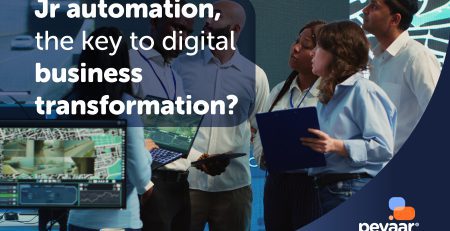Embrace AI and Machine Learning: How CTOs Can Drive Innovation and Efficiency
Did you know that businesses leveraging AI and machine learning can increase efficiency by up to 40%? These technologies are transforming industries, driving innovation, and streamlining operations. For CTOs, the challenge isn’t just understanding AI but knowing how to implement it strategically for maximum impact. This article explores how CTOs can embrace AI and machine learning to gain a competitive edge.
Understanding AI and Machine Learning
Artificial Intelligence (AI) refers to the simulation of human intelligence processes by machines, especially computer systems. These processes include learning (the acquisition of information and rules for using the information), reasoning (using the rules to reach approximate or definite conclusions), and self-correction. Machine Learning (ML), a subset of AI, involves the use of algorithms and statistical models to enable computers to improve their performance on tasks through experience. Key concepts in ML include supervised learning, unsupervised learning, and reinforcement learning.
Differences Between AI and Machine Learning
While AI is the broader concept of machines being able to carry out tasks in a way that we would consider “smart,” machine learning is a specific application of AI that involves algorithms that allow computers to learn from and make decisions based on data. In essence, all machine learning is AI, but not all AI is machine learning. AI can include rule-based systems, robotics, and natural language processing (NLP), whereas machine learning focuses on pattern recognition and predictive analytics.
The Role of the CTO in AI Adoption
Before diving into AI implementation, CTOs must establish a strategic vision that aligns AI adoption with business objectives. This starts with a well-defined roadmap and clear success metrics.
Strategic Planning
CTOs play a pivotal role in the strategic planning of AI adoption. They must align AI initiatives with the company’s goals, ensuring that AI projects deliver measurable business value. This involves identifying areas where AI can have the most impact, such as improving customer service through chatbots or enhancing product quality through predictive maintenance. Strategic planning also includes defining key performance indicators (KPIs) to measure the success of AI initiatives and ensuring that AI strategies are flexible enough to adapt to evolving business needs.
Building a Tech-Savvy Team
Assembling a team with the right skill set is crucial. CTOs should focus on hiring and training employees who are proficient in AI and machine learning technologies. This includes data scientists, machine learning engineers, and AI researchers. Investing in continuous education and upskilling is essential to keep the team updated with the latest advancements. Additionally, fostering a collaborative environment where data scientists and domain experts work together can lead to more effective AI solutions.
Overcoming Resistance to Change
Introducing AI can be met with resistance. CTOs need to foster a culture of innovation, addressing concerns and demonstrating the benefits of AI to gain buy-in from all stakeholders. This involves clear communication about the advantages of AI, such as increased efficiency, better decision-making, and the potential for new revenue streams. Providing training and support can help employees feel more comfortable with the new technology. Engaging stakeholders early in the process and showing quick wins can also help in reducing resistance.
Driving Innovation with AI and Machine Learning
- Enhancing Product Development
AI and machine learning can significantly accelerate product development cycles. By leveraging predictive analytics, companies can identify market trends and customer needs more efficiently, leading to the creation of innovative products. For instance, AI can analyze customer feedback and usage data to identify features that are most valued, guiding the development of new product iterations. AI-driven design tools can also help in creating more efficient and effective product designs.
- Personalizing Customer Experiences
Machine learning algorithms can analyze customer data to deliver highly personalized experiences. From recommendation engines to targeted marketing, AI helps businesses meet individual customer preferences, enhancing satisfaction and loyalty. For example, e-commerce platforms use ML models to recommend products based on past purchases and browsing history, while streaming services suggest content tailored to individual viewing habits. Personalized customer service through AI-powered chatbots can also improve response times and user satisfaction.
- Optimizing Operations and Processes
AI-driven automation can streamline operations, reducing human error and increasing efficiency. Machine learning models can optimize supply chain management, predictive maintenance, and other critical business processes. For instance, AI can predict demand more accurately, ensuring that inventory levels are optimal and reducing storage costs. Predictive maintenance algorithms can monitor equipment health and predict failures before they occur, minimizing downtime and maintenance costs.
Ensuring Efficiency Through AI and Machine Learning
Routine and repetitive tasks can be automated using AI, freeing up human resources for more strategic activities. This automation boosts productivity and reduces operational costs. Examples include robotic process automation (RPA) for handling administrative tasks, AI-powered customer service for managing inquiries, and AI-based systems for automating data entry and analysis.
- Data-Driven Decision Making
AI provides valuable insights through data analysis, enabling informed decision-making. Machine learning models can identify patterns and trends, guiding business strategies and improving outcomes. For instance, AI can analyze sales data to identify the most profitable customer segments, allowing for targeted marketing campaigns. Predictive analytics can forecast market trends, helping businesses to make proactive decisions and stay ahead of the competition.
- Cost Reduction Strategies
By optimizing resource allocation and reducing waste, AI can lead to significant cost savings. Predictive maintenance, for instance, helps in timely addressing equipment issues, preventing costly downtimes. AI-driven supply chain optimization can reduce logistics costs by ensuring efficient routing and inventory management. Additionally, AI can help in reducing energy consumption by optimizing heating, cooling, and lighting systems in facilities.
Challenges and Solutions in AI Implementation
- Data Privacy and Security
AI systems require vast amounts of data, raising concerns about privacy and security. CTOs must implement robust data protection measures to ensure compliance with regulations and safeguard sensitive information. This includes data encryption, anonymization techniques, and strict access controls. Regular audits and compliance checks can help in maintaining data security. Additionally, developing transparent data usage policies and obtaining user consent are crucial in building trust.
- Managing AI Bias
AI models can sometimes exhibit biases based on the data they are trained on. CTOs should prioritize the development of fair and unbiased algorithms, ensuring that AI applications are equitable and ethical. This involves using diverse and representative datasets for training, implementing bias detection and mitigation techniques, and continuously monitoring AI systems for biased outcomes. Engaging diverse teams in AI development can also help in identifying and addressing potential biases.
- Scalability Issues
Scalability can be a challenge when implementing AI solutions. CTOs need to plan for scalable infrastructure that can handle growing data volumes and increased computational demands. This includes investing in scalable cloud platforms, distributed computing resources, and efficient data storage solutions. Developing modular and flexible AI architectures can also help in scaling AI solutions as the business grows. Monitoring performance and optimizing resource usage are essential for maintaining scalability.
Case Studies of Successful AI Integration
- Example 1: AI in Healthcare
AI has transformed healthcare by improving diagnostics and patient care. Machine learning algorithms analyze medical data to provide accurate diagnoses and personalized treatment plans, enhancing patient outcomes. For example, AI can analyze imaging data to detect diseases such as cancer at an early stage, improving treatment success rates. AI-driven predictive models can also help in identifying patients at risk of chronic conditions, enabling preventive care.
- Example 2: AI in Retail
Retailers use AI to enhance customer experiences and optimize inventory management. Machine learning models predict customer preferences and demand patterns, enabling better stocking and reducing excess inventory. AI-powered recommendation engines increase sales by suggesting products that customers are likely to purchase. Additionally, AI can optimize pricing strategies by analyzing competitor prices and market trends.
- Example 3: AI in Manufacturing
In manufacturing, AI-driven predictive maintenance minimizes equipment downtime and enhances production efficiency. Machine learning models identify potential failures before they occur, allowing for proactive maintenance. AI can also optimize production schedules and workflows, improving overall efficiency. For instance, AI can analyze production data to identify bottlenecks and suggest process improvements. Additionally, AI-powered quality control systems can detect defects in real-time, reducing waste and improving product quality.
Future Trends in AI and Machine Learning
- Predictive Analytics
The future of AI lies in predictive analytics, where machine learning models will become even more adept at forecasting trends and behaviors, helping businesses stay ahead of the curve. Advanced predictive models will leverage real-time data and more complex algorithms to provide highly accurate forecasts. This will enable businesses to anticipate customer needs, optimize operations, and develop proactive strategies.
- Autonomous Systems
Autonomous systems, including self-driving cars and drones, are set to revolutionize industries by performing complex tasks without human intervention, enhancing efficiency and safety. These systems rely on advanced AI algorithms for navigation, decision-making, and real-time adaptation to changing environments. The development of more robust and reliable autonomous systems will lead to widespread adoption in various sectors, including transportation, logistics, and agriculture.
- AI-Driven Innovation
AI will continue to drive innovation across sectors, enabling the development of new products and services that were previously unimaginable, fostering economic growth and improving quality of life. Innovations such as AI-powered virtual assistants, smart home devices, and personalized medicine are just the beginning. As AI technology advances, we can expect even more groundbreaking applications that will transform industries and create new opportunities.
Conclusion
AI and machine learning offer unprecedented opportunities for innovation and efficiency. CTOs, by strategically adopting these technologies, can lead their organizations into a new era of technological advancement. The journey may be challenging, but the rewards are immense, making it a worthwhile endeavor for forward-thinking businesses. By understanding the intricacies of AI, building the right teams, and addressing implementation challenges, CTOs can harness the full potential of AI to drive business success.
FAQs
What is the difference between AI and Machine Learning?
AI is the broader concept of machines performing tasks that require human intelligence, while machine learning is a subset of AI that focuses on algorithms allowing machines to learn from data. Machine learning is a specific approach to achieving AI, relying on data-driven models to make predictions and decisions.
How can AI improve customer experience?
AI can personalize customer interactions by analyzing data to understand preferences, leading to tailored recommendations, targeted marketing, and enhanced overall satisfaction. AI-driven chatbots and virtual assistants provide quick and efficient customer support, while predictive analytics help in anticipating customer needs and improving service delivery.
What are the main challenges in implementing AI?
Challenges include data privacy and security, managing AI bias, and scalability issues. Addressing these requires strategic planning, robust infrastructure, and continuous monitoring. Ensuring compliance with regulations, developing fair algorithms, and planning for scalable AI architectures are essential steps in overcoming these challenges.
How does AI help in cost reduction?
AI optimizes resource allocation, automates routine tasks, and enables predictive maintenance, all of which contribute to significant cost savings. By improving operational efficiency and reducing waste, AI helps businesses lower their operational costs. AI-driven decision-making also leads to more effective and efficient business strategies, further contributing to cost reduction.
What future trends should CTOs watch in AI?
CTOs should watch for advancements in predictive analytics, autonomous systems, and AI-driven innovation, as these areas promise to drive future technological progress. Staying informed about the latest developments in AI and machine learning, investing in emerging technologies, and fostering a culture of innovation will help CTOs leverage future trends for business success.
Pevaar helps businesses streamline operations with AI-driven solutions and process automation. From workflow optimization to Microsoft Power Automate integration, our experts ensure seamless implementation to enhance efficiency and reduce costs. Ready to transform your business? Let Pevaar help you innovate!












Comment (1)
I’m often to blogging and i really appreciate your content. The article has actually peaks my interest. I’m going to bookmark your web site and maintain checking for brand spanking new information.